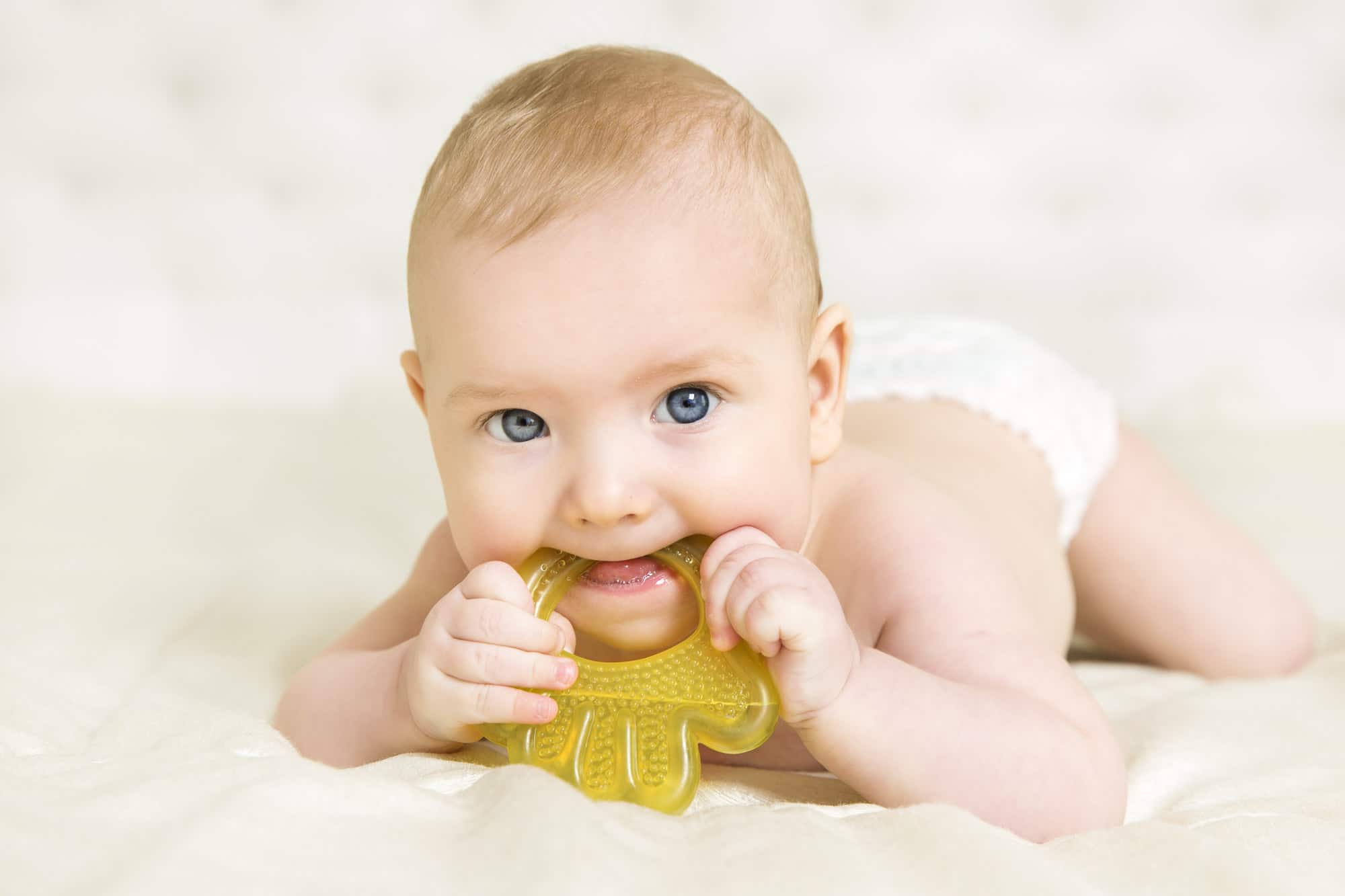Sooner or later all parents experience their baby’s transformation from a happy, easy going bundle of toothless grins into a teething baby: otherwise known as a crabby, sleepless, food refusing, runny nosed cranky-pants.
As difficult as your teething baby might be, your child is to be pitied; the process of growing teeth is anything but comfortable for your little tyke, even if it is necessary. The most parents can do is to figure out if teething is really the cause of upset and then take action to soothe the discomfort as best they can.
Diagnosing teething: zeroing in on the cause
A teething baby isn’t the first thing most parents suspect when suddenly their baby isn’t sleeping normally or refusing to eat and exhibiting a fever or rash. Teething is, however, the cause of a wide variety of seemingly unassociated complaints meaning that it is best to put teething near the top of your checklist when baby begins fussing or sprouting odd symptoms at random; especially if they are in the right age range.
The timing of baby’s first tooth varies widely, anywhere from a few weeks to past one year can be normal. The average age for those first chompers to pop up is between 4 and 7 months.
Symptoms of Teething: what to look for
If your child falls within the above mentioned age brackets knowing what to look for can provide real peace of mind. Crying and irritability are some of the least worrisome effects of teething. Teething babies also break out in random rashes on their bottoms and body or sometimes experience another bout of baby acne on their faces. Low fevers are common in teething children. Recognizing that your child’s elevated temperature may be a side effect of teething can help you avoid an unnecessary trip to your pediatrician.
Stuffy and runny noses are very common among teethers. To help distinguish between a teething baby and an ill baby moms and dads will want to watch the discharge. Greenish or brown thicken mucous is not teething related and might need attention, especially if accompanied by a fever and cough. However if your child’s runny nose is clear then his health is likely to also be in the clear. Keep in mind a runny nose might make your baby cough, sneeze or have a sensitive throat so don’t be shocked if they cough from time to time.
Other symptoms common to teething babies include: loss of appetite, not wanting to nurse, sleeplessness, crying, wanting a binky or needing to suck more than usual, lots of drooling, more spitting up, mouthing on everything, and biting or chewing on fingers, toes and pretty much anything that fits into the mouth.
Nothing Beats Hands on!
If all these symptoms still leave you flummoxed a visual inspection of your child’s mouth will help settle the matter once and for all. When newborns first grin parents notice their gums have a rim running along the top. As teeth begin to come up from below this ridge flattens and disappears.
If baby’s gums have become ridgeless, flatter, are swelling and display bumpy marks it is a safe bet that there are teeth just waiting to pop out.
The image featured at the top of this post is ©inarik/ via Getty Images.
